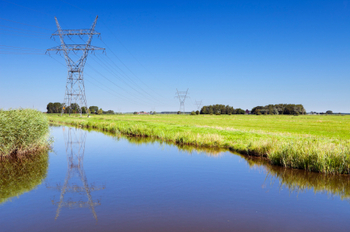
GAO advocates coordinated regulation of water and energy sectors.
Economic instability, social unrest, and diminished quality of life may loom in America’s future if regulators fail to better align our energy and water policies, according to a recent federal report.
Citing concerns about the interrelated nature of energy generation and water usage, a recent Government Accountability Office (GAO) report emphasized the need for coordination among regulators charged with managing the two resources. The energy sector is expected to demand up to 80% of new water usage in the next two decades. Yet water shortages already affect many parts of the country, and both the nation’s energy consumption and its preoccupation with energy independence will only increase.
The GAO report called attention to five specific intersections between water and energy, including thermoelectric power plants, bio-fuels, oil shale, shale gas, and energy consumption by water suppliers.
The GAO stressed that because energy production and water use are inextricably linked, regulators seeking to manage these resources will need to increase their communication with other interested parties. The agency recommended the federal government expand its consultation with scholars, industrial representatives, environmentalists, and local governments.
Consulting with experts across the water and energy sectors will aid the government in crafting a comprehensive regulatory approach. The delicate relationship between water quality regulations and energy usage illustrates this conundrum. Strengthened water quality regulations will increase the energy demands of water treatment facilities by requiring additional treatment steps. At the same time, several of the fastest growing portions of the energy sector generate large quantities of wastewater, further burdening treatment plants. If entities like the Environmental Protection Agency (EPA) and its local equivalents are to shape a clean water regime without putting U.S. energy independence at risk, they will need to consider the related concerns of the energy sector.
The GAO also noted that regulators should consider localized tensions that may exist between water and energy interests. For example, the GAO claimed that the amount and quality of wastewater generated by hydraulic fracturing for natural varies greatly by location. A national effort to encourage fracking would put varying demands on local treatment facilities and on water reserves throughout the country.
Moving forward, interagency collaboration is needed to collect and share data concerning the energy-water nexus, according to the GAO. Such data are particularly important because the actual implications of the water-energy nexus are still uncertain and depend on separate variables, including climate change, population growth and movement, and shifts in the energy market. Because these related uncertainties veil the degree to which energy and water usage tensions will develop, coordinated, informed, and thoughtful policy decisions are all the more important.
Despite the drastic implications raised, GAO’s recommended course of action—for the DOE to “take actions necessary to establish a program to address the energy-water nexus, with involvement from other federal agencies as described in the EPAct,”— largely duplicates recommendations that have come before. It is possible that this latest report may spur regulators to take notice, but there is nothing to suggest that it will generate any more momentum than GAO’s prior reports on the subject or even previous legislative exhortations.



